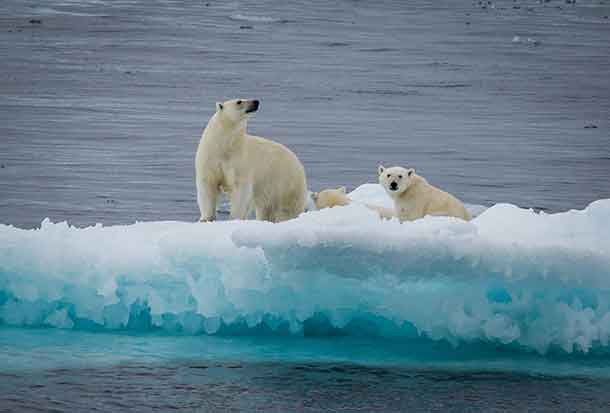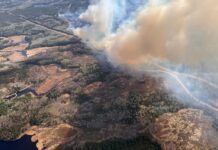

Climate Change Still Major Threat to Long Term Stability
IQALUIT – Newly released survey results show two of Canada’s 13 polar bear subpopulations, previously thought to be declining, are likely stable and one could even be increasing.
David Miller, president and CEO of WWF-Canada, says “Though it is encouraging to see these polar bear populations are stable, climate change will continue to have a significant impact on the quality and availability of their habitat. Sea ice is vital for polar bears. This survey, coupled with anticipated continuing sea-ice declines, underscores the importance of protecting the Last Ice Area – where summer sea ice is expected to last the longest – for the long-term health of this species.”
Brandon Laforest, senior specialist, Arctic species and ecosystems for WWF-Canada, comments “This work has helped to establish a reliable estimate for these polar bear subpopulations, a key component for the creation of a comprehensive conservation plan and a baseline from which to measure their health in the future. The decreases in reproduction and body condition of polar bears in Baffin Bay are very concerning. As sea ice continues to decline, frequent and timely monitoring of polar bear subpopulations across Canada will be necessary to ensure co-management boards can make informed decisions.”
But the decline of Arctic sea ice is still a major threat to the species’ long-term survival, the survey report says.
What the report finds
- The Baffin Bay and Kane Basin subpopulations are now estimated to be 2,826 and 357 bears, respectively. These numbers are higher than the last time the bears were surveyed in the 1990s.
- The Baffin Bay subpopulation has experienced dramatic losses in sea-ice habitat. Every decade since 1979 has seen an ice-free period that lasts on average 12 days longer, and sea ice melt is occurring three to four weeks earlier in the 2000s than it did in the 1990s. For Baffin Bay polar bears, this habitat loss has resulted in a shift in range northward in all seasons, and bears spending 20 to 30 days more on land now compared to the 1990s.
- Though the subpopulations are currently stable, the report outlines many areas of concern for the Baffin Bay subpopulation related to declining sea ice due to climate change. This has resulted in:
- Decreases in body condition.
- Declines in cub production.
- An increase in the frequency of long swimming events for female polar bears.
- These subpopulations are shared between Canada (Nunavut) and Greenland.
- WWF-Canada contributed funding for the recent survey, which was conducted from 2011-2013.






